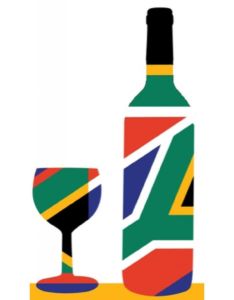One can grow the greatest grapes, and make the greatest wine, but ultimately the wine must be sold, drunk, appreciated, and hopefully more of it purchased. While we have been making surprisingly good headway in getting the Silkbush brand established in South Africa and some adjoining countries, we don’t anticipate such sales to ever approach the level possible in certain major foreign markets. Under the guidance of and with the exceptional business relationships developed by our lead US importer, Ms. Selena Cuffe, we are starting, finally, to get some recognition and sales in major US markets, especially New York and Illinois. However, our shipments to the US have been in multiple pallet loads (56-70 cases of 12 bottles); in August 2017 we will bring in our first full container, of 700 9 liter cases.
 Since 1994, RSA wine quality has risen quite steadily to very high levels. Extensive replanting of vineyards has taken place, and wine making technology and training has improved dramatically. Accordingly, the acceptance, and more recently, the sustained accolades of the international wine journalist community have been attained. Despite these achievements, the penetration of foreign wine markets with consumer sales of RSA branded wines has not kept pace. In the US, bottled RSA wine sales have remained at approximately 1 million cases/year for over 10 years, while the total USA wine market continues to grow, presently more than 399 million cases per year, including sparkling wine, and that over 14% alcohol. Annual US wine sales growth, however, has slowed to about 2.5% to 3%+ in recent years, which does not make things easier and many more US wineries are created annually. (Total US wineries, which exist in all 50 states, is fast approaching 10,000.) With more US producers in the market every year, and extensive local promotional efforts by US wineries, many large US grocery store chains no longer carry any selections from RSA; retail distribution has shrunk in numerous areas. Imported wines constitute 33% of US wine sales, but clearly those sales proceeds are largely going to other wine producing regions of the world. (RSA wine share of US market is a meager 1/4 of 1%!)
Since 1994, RSA wine quality has risen quite steadily to very high levels. Extensive replanting of vineyards has taken place, and wine making technology and training has improved dramatically. Accordingly, the acceptance, and more recently, the sustained accolades of the international wine journalist community have been attained. Despite these achievements, the penetration of foreign wine markets with consumer sales of RSA branded wines has not kept pace. In the US, bottled RSA wine sales have remained at approximately 1 million cases/year for over 10 years, while the total USA wine market continues to grow, presently more than 399 million cases per year, including sparkling wine, and that over 14% alcohol. Annual US wine sales growth, however, has slowed to about 2.5% to 3%+ in recent years, which does not make things easier and many more US wineries are created annually. (Total US wineries, which exist in all 50 states, is fast approaching 10,000.) With more US producers in the market every year, and extensive local promotional efforts by US wineries, many large US grocery store chains no longer carry any selections from RSA; retail distribution has shrunk in numerous areas. Imported wines constitute 33% of US wine sales, but clearly those sales proceeds are largely going to other wine producing regions of the world. (RSA wine share of US market is a meager 1/4 of 1%!)
In general, there are three significant stumbling blocks for all imported wines in the US. The bureaucratic and legal issues that all wineries, be they domestic or foreign, have in attempting to gain market share in the US are relatively well known. The first, and very significant hurdle, is that the 21st Constitutional Amendment (in 1933) permitted each US State to establish its own rules and regulations for the sale of alcoholic beverages. This ugly stepchild of the repeal of Prohibition and then widespread religious antipathy to “demon rum,” created a legal compliance nightmare that continues up to the present. What is legal in one state may represent a felony in another, and small producers, in attempting to comply with the labyrinth of multiple state rules, often find it prohibitively expensive and time consuming. The second hurdle is the ever-consolidating distribution system of interstate wholesalers. Some thirty years ago there were almost as many US distributors as wineries; now there are about 10,000 domestic wineries and little more than 300 distributors. And fewer than 10 giant wholesalers sell over 90% of the bottled wine in the US! Obtaining attention of capable distributors is very difficult for all wineries.
Thirdly, the advantage of having a depreciated Rand, when pricing export wines, is not helpful when it comes to the expense of personnel required to represent RSA wines in the US. Any continuing promotional marketing programs (while funded in Rand but paid in Dollars) must be well thought out and justified. Further still, maintaining a RSA wine sales presence sufficient to sell in the US is no easy undertaking. New York is seven time zones to the west of Cape Town, and 40 degrees north of the Equator, versus 33 degrees south for Cape Town. Almost all Cape producers must fly to Jo’berg to get a nonstop flight to New York or Atlanta; the minimum travel time of 24 hours, just to the US eastcoast, and resulting jet lag impacts are very real. (The author can attest to this as he has made close to 40 round trips over the past 23 years from the US to RSA.) Accordingly, since few producers want to make the expensive and exhausting trip (and recovery) more than once a year, if that, relatively few RSA wineries have a personal presence in the US. Therefore, “Brand South Africa,” the overall presence of all RSA wineries in the US is limited.
Because we do not anticipate significant change, if any, in these conditions, we do not hold much hope for increased RSA wine sales in the US wine market (albeit the largest in the world) for many years.
Nevertheless, the purpose of this wide-ranging discussion is not to dwell on the marginalized role of RSA wine in the US wine market, but also to observe on some alternatives for selling more RSA wine in other foreign markets. We will address these market potentials as we continue this series.
